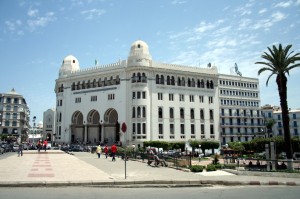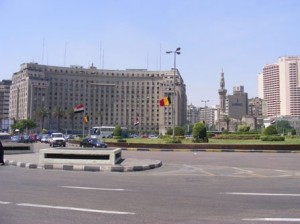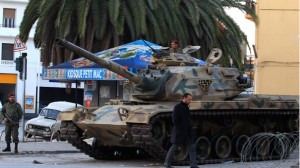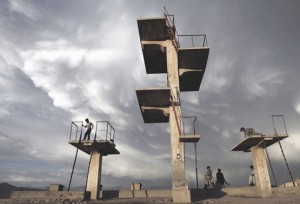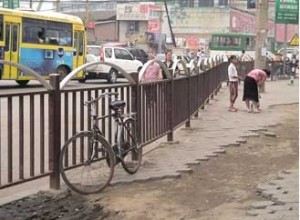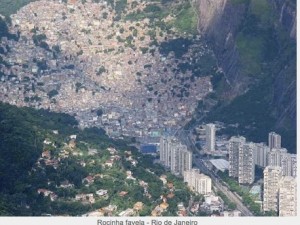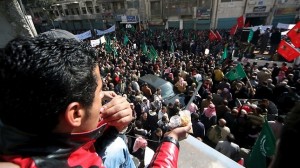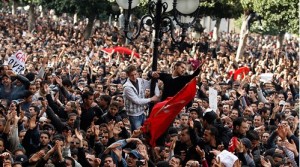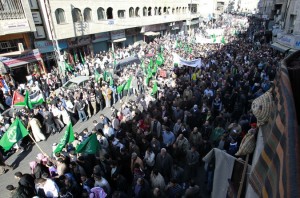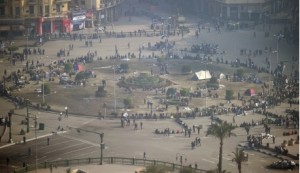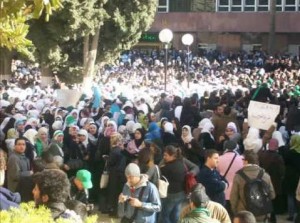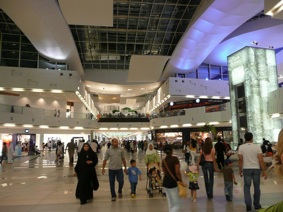Open Cities 32 About Barriers and Openness
It is timely to think about barriers when so many human beings are risking their lives to tear them down. Is it a primal urge of mankind to be unbound, free to move and think, free to assemble and undertake common pursuits? And is the urge for freedom, for openness so strong that people are putting their lives and livelihoods on the line, even if the barriers may only come down when most of them may have long gone?
Cities are the arena where these motivations are manifesting themselves. What is the relation between the degree of closure of a city, the amount of barriers erected there and the potential for protest of those who feel excluded? Does there have to be at least some degree of openness for such protests to be able to take place? Imagine a fortress. Would protests be possible against it, within it? Do cities have to have a certain degree of permeability, of holes in their barriers for protests to become a reality?
Barriers here are understood in the widest sense, not just as gates and fences, walls and watch towers, but also the police, the security forces, the army and their arsenal who protect those behind the barriers, the powers and the privileges themselves of those who erect the barriers, and those who prop them up from a safe distance.
Barriers exist everywhere, even in cities which consider themselves open. People will rattle at these barriers, demand that they be removed. There are the natural barriers, such as rivers and waterfronts, ravines and escarpments, often the reason why cities have been founded there in the first place. There are physical man made barriers, such as busy roads which are difficult to cross.
Cities are made up of many different quarters and barriers exist between them, sometimes tangible, sometimes mental. The public realm mediates between the various parts of the city and constitutes focal points, places of encounter and exchange, symbols of identity and city pride. The public realm forms bridges between areas where physical or virtual barriers restrict access and ownership, materially, socially, economically, culturally. The public realm is unifying the divides between spaces where use is restricted to those with entitlement.
When barriers and enclosures are multiplying, when they are excluding an ever greater number of people, when the use of the city is becoming too restricted, those who feel deprived of the right to the city may rebel. They do that in the public realm, in the most symbolic places of the most symbolic cities, the main square in the capital, the void in front of a seat of power, the wide avenues which lead to monuments to privilege.
What happens after the barriers have been torn down, after those who have erected and maintained the barriers are removed? How does that affect the city, and can the city contribute to change for the better? Can it be made more open, more permeable, more equal, more equitable? Is it enough to open gates, demolish fences and tear down walls to create an open city? How open can open be, especially in a world which is becoming both more mixed and more diversified?
The city and its symbolic public realm are playing an important role in this process. Just use Cairo and Tahrir Square as an example, but it could be similar squares in Tunis, Benghazi, Manama, Alger, Sana’a or Aden.
People are congregating in the public realm, a space they consider their common, the place which symbolises their belonging to the city. They come with banners, slogans, grievances, demands, expectations. In Tahrir Square like in the other spaces of protest up and down the Maghreb and the Middle East where people from many different walks of life and creed are congregating, the public realm becomes a symbol of the diversity of contemporary society, even in repressive regimes.
An open city is a city which caters for all of them, whose spaces are representing their diversity. Clearly, the places where so many protests are taking place at the moment, these squares and the buildings which surround them are testimonies of the rich and chequered history of these nations, the way they were constituted, conquered and ruled, by waves of different powers, different societies, different religions. The cities have adapted relentlessly, and will continue to do so now and in the future. They have suffered destruction and disappearance, rebuilding and change but the collective memory of these places persists even after fires and killings. Open cities are resilient and will re-emerge. One can only wish that this time they do not have to endure complete destruction, as they already contain so much diversity, so many symbols of different cultures that a new cosmopolitan and open society may be able to preserve and build upon them. Some hope, my hope.
Post Scriptum: a fast moving scene
Since then other people in the Maghreb and the Middle East have been manifesting their grievances about their lack of freedom of movement, assembly and speech. They demand to express themselves and live their everyday lives freely, openly. People of Bahrein demonstrated on Pearl Square, and most dramatically, people of Lybia are defending what they consider their spaces throughout the country. Significantly, all these demonstrations take place in cities. By claiming the right to the city they are pioneering openness in their cities.
We in the West take these freedoms for granted. We complain about excess CCTV, about too much political correctness, but our lives are not in danger and we enjoy the right to our cities. How can we express our solidarity with fellow citizens who wish to enjoy the same rights, the same freedoms as we do, and who are eager to engage in the responsibility to open their cities to all. The Libyan situation poses an extraordinary dilemma. Those who have suffered oppression for so long and are standing up against it long for support and recognition of their rights by the world out there. Meanwhile the West, still living the trauma of intervention without follow-up plans is hesitant whilst the civilian people are losing their lives and are powerless against the destruction of their cities.

